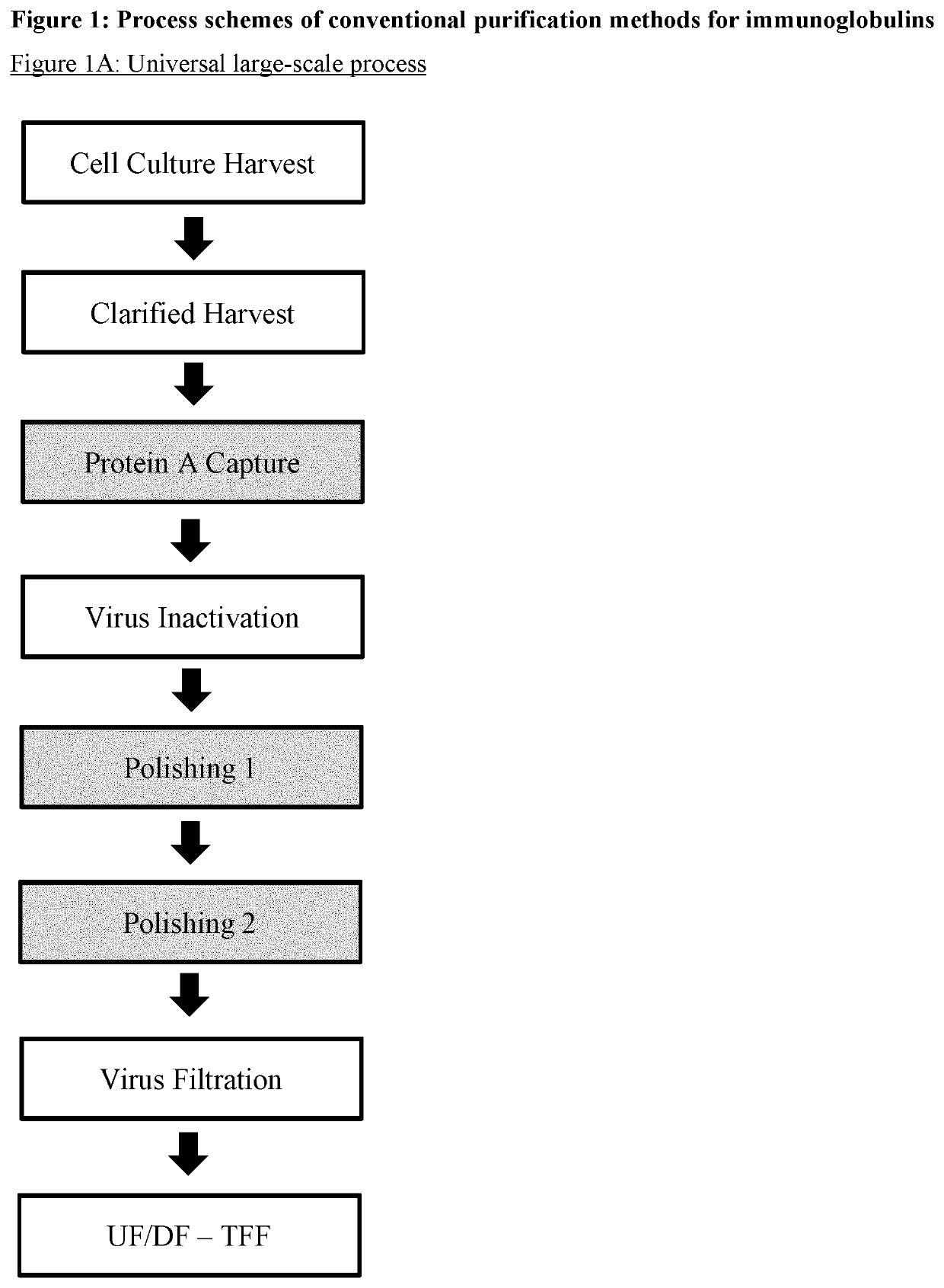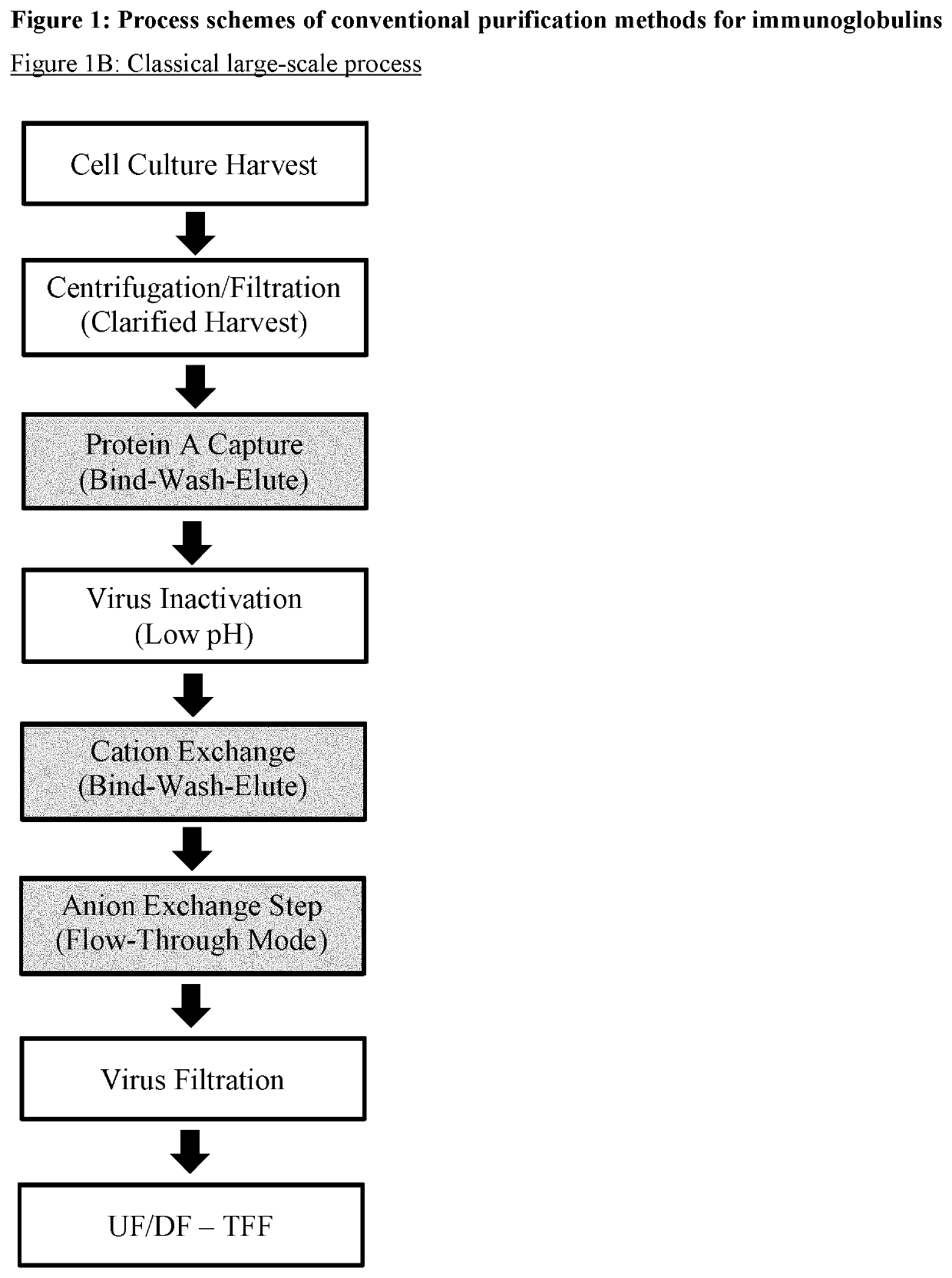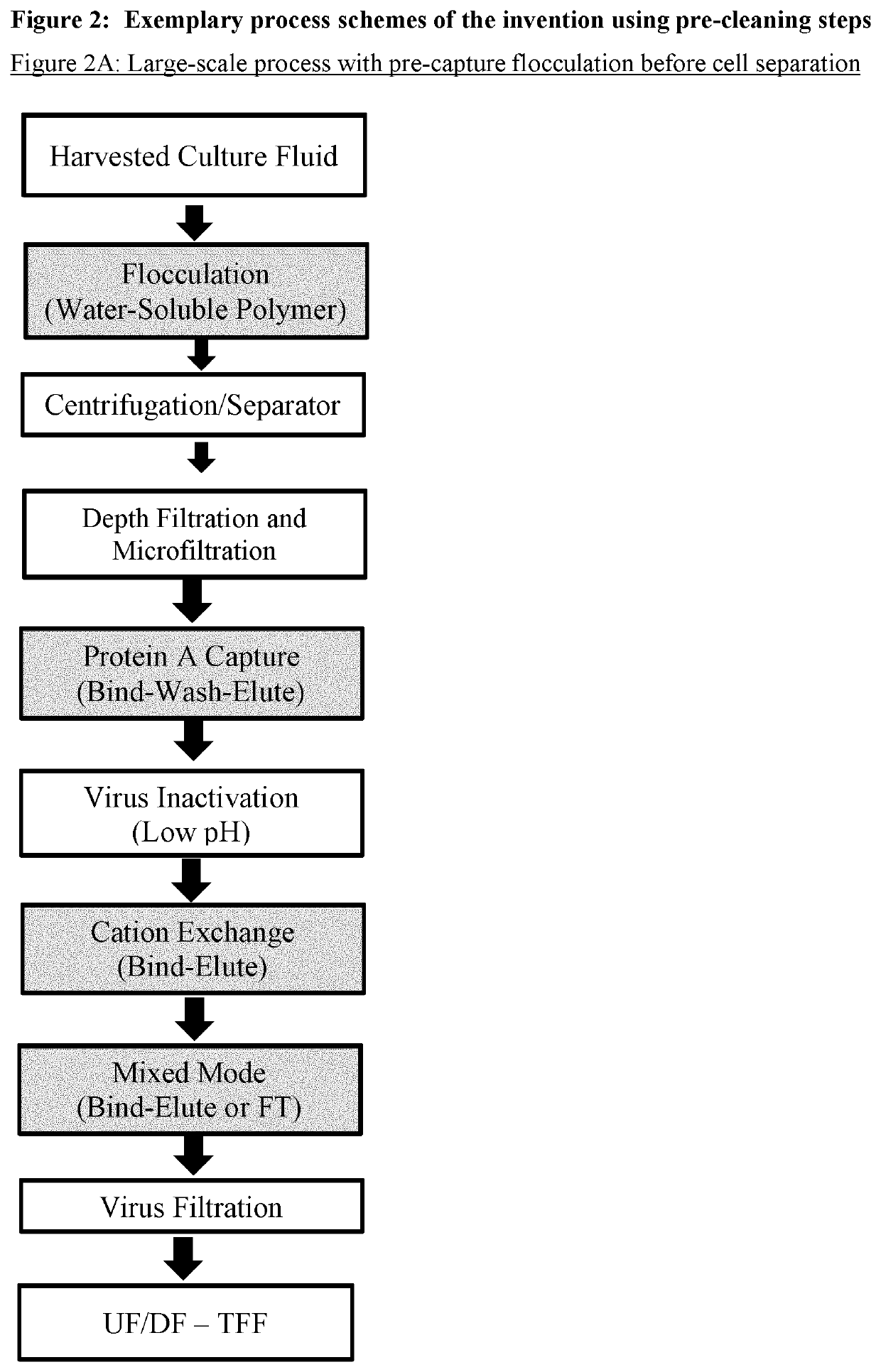Improvement of affinity chromatography of immunoglobulins by using pre-capture flocculation
a technology of affinity chromatography and immunoglobulin, which is applied in the direction of biochemistry apparatus and processes, solid sorbent liquid separation, peptide preparation methods, etc., can solve the problems of 50% of the overall downstream process cost and the most expensive step in affinity chromatography for purification of immunoglobulins, and achieve efficient and cost-effective, satisfactory purity and yield, and prevent precipitation
- Summary
- Abstract
- Description
- Claims
- Application Information
AI Technical Summary
Benefits of technology
Problems solved by technology
Method used
Image
Examples
example 1
Immunoglobulins and Cell Cultures
[0352]The methods of the invention depend neither on specific antibodies nor on specific host cells used for the expression of the immunoglobulins. The same is true for the mode of expression and the selected culture conditions, which were optimized for maximum yields in the harvest. Different monoclonal antibodies were used during the development of the methods of the invention. They were successfully purified in various scales according to the methods of the invention. Most of the selected experiments presented in the Tables were performed with Bevacizumab, a humanized, anti-VEGF, IgG1 antibody. In addition, some other experiments were performed with Trastuzumab, a humanized, anti-HER2, IgG1 antibody and with Denosumab, a fully human anti-RANKL IgG2 antibody. All three antibodies were recombinantly expressed in CHO cells, which were propagated in fed-batch cultures of different scales. Most of the flocculation experiments in the development phase w...
example 2
Comparing Different Flocculants (Tables 1 to 3)
[0353]The flocculation experiments of Tables 1 to 3 were performed in different series using pilot scale (100 L) culture of CHO cells producing a humanized antibody of the IgG1 subclass (Bevacizumab). The titer of the antibody was between 1.16 and 1.52 g / L. The flocculants were added to 20 ml aliquots of the cell culture broth at the end of fermentation, before cell separation. Three different cationic substances were tested in different concentrations. 1) pDADMAC=poly (diallyldimethylammonium chloride), 2) chitosan, and 3) calcium chloride. pDADMAC was purchased as 10% (w / v) solution (EMD Millipore). Chitosan was purchased as solid substance (Sigma) and 1% (w / v) was solved in 0.1 M acetic acid. The pH operation range of chitosan is about 4.5 to 5.0. Calcium chloride was added using an aqueous stock solution.
[0354]The experiments were performed according the following sequence of steps:[0355]Collecting an aliquot of 20 ml from the ferme...
example 3
Further Flocculation Experiments with pDADMAC (Tables 4 to 6)
[0373]In subsequent more extended test series, the effect of pDADMAC on the reduction of HCDNA and turbidity was investigated in parallel experiments using samples from six different cell cultures expressing Bevacizumab. The test methods were the same as described for Example 2. The ranges of the non-flocculated supernatants (controls) were 44.3 to 62.9 μg / ml HCDNA, 19.9 to 29.1 FNU turbidity, and 1.24 to 2.14 mg / ml HCP. The antibody titer were between 1.16 and 1.52 mg / ml. Five different pDADMAC concentrations were tested and the mean values of the reduction in % were calculated.
TABLE 4aEffect of pDADMAC concentration on reduction of HCDNA in different cell culture batchesHost Cell DNA [ng / ml]% ReductionpDADMAC [% w / v]00.02500.03750.05000.07500.0900Cell Culture 1465003.93.10.20.20.2099.9999.99100100100Cell Culture 26290059.916.0Not16.016.0099.9199.98done99.9899.98Cell Culture 34540016.15.75.75.75.7099.9699.9999.9999.9999.9...
PUM
| Property | Measurement | Unit |
|---|---|---|
| molecular mass | aaaaa | aaaaa |
| densities | aaaaa | aaaaa |
| temperature | aaaaa | aaaaa |
Abstract
Description
Claims
Application Information
 Login to View More
Login to View More - R&D
- Intellectual Property
- Life Sciences
- Materials
- Tech Scout
- Unparalleled Data Quality
- Higher Quality Content
- 60% Fewer Hallucinations
Browse by: Latest US Patents, China's latest patents, Technical Efficacy Thesaurus, Application Domain, Technology Topic, Popular Technical Reports.
© 2025 PatSnap. All rights reserved.Legal|Privacy policy|Modern Slavery Act Transparency Statement|Sitemap|About US| Contact US: help@patsnap.com



